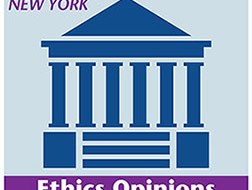Lawyers in Social Security Cases May Recover Contingent Fees
By Lazar Emanuel [Originally published in NYPRR September 2002]
Traditionally, lawyers representing clients on social security claims have relied on contingent fee agreements providing for fees equal to 25 percent of past-due benefits recovered. In an action brought by three social security claimants, the Supreme Court recently upheld the validity of these agreements, rejecting the calculation of fees under the lodestar method [Gisbrecht v. Barnhart, U.S. No. 01-131, 5/28/2002].
Fees in social security cases are governed by 48 U.S.C. §406(b)(1)(A), which provides for a “reasonable fee…not in excess of 25 percent of past due benefits…”
Additional fees may be recovered by the lawyer under the Equal Access to Justice Act, which determines fees by applying the lawyer’s hourly rate to time expended, but an adjustment is then made by subtracting the smaller of the two fees to the extent required to guarantee that the client recovers 100% of his past due benefits.
The district court in Gisbrecht had refused to recognize the contingent fee agreement. Instead the court applied the lodestar method for determining legal fees. Under this method, the number of hours devoted to a case are multiplied by a reasonable hourly fee as determined by the court. The Circuit Court affirmed, creating a conflict among circuits which the Gisbrecht decision resolved.
Writing for the Court, Justice Ginsburg acknowledged that the language of §406(b) was ambiguous and inconclusive on its face. She cited the following in support of the Court’s construction that the Section supported contingent fee agreements.
1. The lodestar method is used today principally in determining the fees to be paid by the loser in federal litigation, not the successful party.
2. Social Security representation depends upon the contingent fee arrangement between lawyer and client.
3. Congress reviewed the issue of exorbitant contingent fees in social security cases after 1965 and imposed a limit of 25%. Insertion of the requirement that the fees be “reasonable” was meant to contain contingent fees, not to outlaw them.
4. Congress could not have intended application of the lodestar method, which was not being applied by the courts in 1965, when Congress acted.
Plausibly read, Justice Ginsburg concluded, §406(b) does not displace contingent-fee agreements as the primary means for setting the fees of lawyers in social security litigation. On the other hand, the courts are directed to determine that the amount of the contingent fee is reasonable in a particular case. “…if the benefits are large in comparison to the amount of time counsel spent on the case, a downward adjustment is…in order.”
Lazar Emanuel is the Publisher of NYPRR.
DISCLAIMER: This article provides general coverage of its subject area and is presented to the reader for informational purposes only with the understanding that the laws governing legal ethics and professional responsibility are always changing. The information in this article is not a substitute for legal advice and may not be suitable in a particular situation. Consult your attorney for legal advice. New York Legal Ethics Reporter provides this article with the understanding that neither New York Legal Ethics Reporter LLC, nor Frankfurt Kurnit Klein & Selz, nor Hofstra University, nor their representatives, nor any of the authors are engaged herein in rendering legal advice. New York Legal Ethics Reporter LLC, Frankfurt Kurnit Klein & Selz, Hofstra University, their representatives, and the authors shall not be liable for any damages resulting from any error, inaccuracy, or omission.
Related Posts
« Automatic Disbarment for Felony Convictions: Time to Rethink Old Rule? Rules for Lawyers Practicing Before SEC »












